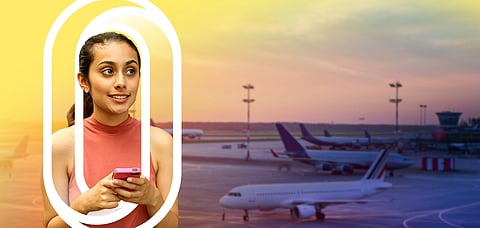

India has one of the most thriving digital eco-systems that support its position as the world&rsquos seventh largest travel and tourism economy. The USD 234 billion economy has been backed by consistent penetration of smartphones and Internet &ndash a combination that has led to increased awareness via social media, influence by travel influencers and accurate marketing by the travel brands. The digital savvy Indian traveller has graduated to segments like wellness, adventure, eco-tourism and solo travel amongst others, to complement the traditional annual holidays and business-only travels. This has given OTAs (online travel aggregators), hotels and airline brands an opportunity to target various kinds of consumers with relevant messaging, deals and comforts of booking on the go. With an increased spectrum of services and needs, investment in the travel and tourism sector is expected to reach USD 57.5 billion in 2022, from USD 41.6 billion in 2017.
Friction to a seamless purchase experience
When there is a roadblock in the purchase journey of Awareness, Consideration, Intent and actual Purchase, due to a mismatch between consumer expectations and what he or she gets, the result is known as &lsquofriction.&rsquo

As a seller, the idea is to make the product easily discoverable through relevant content, complete information for a considered decision, lead the buyer to a simple platform for purchase to realize the intent, and make the payment process easy. Since consumer expectations have changed and businesses are not reaching out to the consumers in the same manner, they are likely to drop off the purchase journey.
A consumer might encounter friction at offline or online stages of the purchase journey. When having to needlessly queue, click, type information, give additional information or fill forms, the buyer is prone to dropping out. Any of these can hinder the consumer experience and result in leaving the platform. When the consumer drops out due to interaction with a media touchpoint not meeting his or her expectations, it is known as media friction. Experts point to the fact, that this is one of the most significant reasons for friction.
The report on Eliminating Friction in Travel Path to Purchase, conducted by Facebook in collaboration with KPMG and Nielsen India, deep dives into media friction as one of the key reasons why a consumer may abandon the purchase journey. Almost 23% of airlines consumers drop out due to friction, of which 50% is attributed to media friction. In the case of hotels, 32% of the consumers leave the purchase journey due to friction, of which 50% is ascribed to media.


Friction mapping
As per the report on Eliminating Friction in Travel Path to Purchase, 8 out 10 people face friction on account of print, radio and outdoor mediums for airline bookings, and 6 out of 10 in the case of hotels. The study reveals that men and women view information differently. While women choose a more considered path to purchase, men tend to make a decision sooner. Lack of clarity, for example, in deals and excess baggage charges, hidden charges, cancellation fee, ambiguous pricing information are the biggest source of dissonance for both.
Consumers in the age group of 18-24 years account for 36% of the visitors on hotel portals. Nearly 25% of them drop out at the last leg of the purchase journey due to trust issues of the medium being used, or lack of transparency in the costing details. In the case of airlines, the same age group tends to be inattentive towards ads. Nearly 50% leave the journey at an early stage, as they are not adequately guided to the next stage.
The friction for NCSS A and NCSS B airline consumers lies in different stages. While NCSS A consumers look for a resolution to queries, NCSS B consumers seek easy payment options. When booking hotels, friction for NCSS A consumers is caused with unclear information, making nearly 50% of them leave at an early stage of the purchase cycle. NCSS B consumers tend to leave the journey due to lack of trust of the medium and hidden charges.
A frictionless future for travel with mobiles
Even though there is a constant endeavour by travel portals and OTAs (online travel agents) to reduce dropouts on the &lsquoawareness-consideration-intent-purchase&rsquo cycle, there is scope to fine tune and mitigate friction at each level. As per the Facebook Travel Report 2018, mobiles have the muscle to reduce media friction, and increase purchase conversion to a tune of 2% for airlines and 3% for hotel bookings. Using mobile anchored media channels is the way to mitigate the risk of loss in business. Both for hotels and airlines, the loss of opportunity can be in the tune of USD 2 billion and USD 9 billion, by reducing media friction.

Mobiles are expected to influence 9 out of 10 hotel and airline bookings by 2022. Mobiles are the solution to reducing friction as they increase influence, have a lesser friction score as a medium and make the purchase journeys shorter. Mobiles compact the purchase journey by 19% in the case of hotels and 24% in the case of airlines. Facebook is expected to influence nearly 50% of mobile purchases for both airlines and hotel bookings by 2022.


Marketers for travel brands should optimise mobile in their media mix to help develop a full funnel approach aimed at reducing friction and purchase journey time for consumers, to unlock a new revenue source for themselves.
Click here to see the full report.
